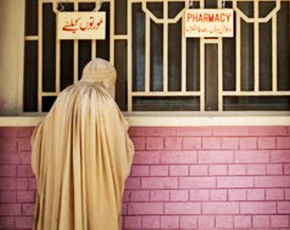
Fundamental as medicines are for human wellbeing, the men and women responsible to deliver good drugs and information about them to doctors, nurses, as well as patients, remain conspicuous by absence from the health care scene in my country and most developing world.
Pharmacists are arguably the most important missing link in the provision of quality medicines and their safe use today. They have the potential to fill the gap created due to the acute shortage of doctors and nursing personnel in primary health care.
Pharmacists are the first port of call for people to get advice on health in general, as well as specific clinical conditions. The pharmacist is trusted by other members of the community to offer professional advice. A common example is a patient coming into the pharmacy with a weepy eye, wanting advice. It’s the pharmacist’s job to identify that problem and refer them onto other health professionals, such as an optometrist.
Pharmacists are responsible for the quality of medicines supplied to patients, ensuring that the medicines prescribed to patients are suitable. They advise patients about medicines, including how to take them, what reactions may occur and answering to other various patients' queries.
Pharmacists also supervise the medicines supply chain and ensure that the pharmacy premises and systems are fit for the purpose, advise other healthcare professionals about safe and effective medicine use, secure supply of medicine response to patients' symptoms and advise on medicines for sale in pharmacies providing services to patients, such as smoking cessation, blood pressure measurement and cholesterol management. They supervise the production and preparation of medicines and assessments of quality of medicines before they are supplied to patients from pharmaceutical manufacturers.
The pharmacy profession has come a long way from being almost non-existent before 1970 to an important provider of pharmaceutical care. The pharmaceutical industry today is in the forefront of Pakistan’s science-based industries, with wide ranging capabilities in the complex field of drug manufacturing and technology.
The spectrum of the pharmacy profession in Pakistan today covers a myriad of opportunities R&D, manufacturing, retail, clinical care, education and regulation. The current availability of pharmacists in terms of pharmacist to population ratio does not compare favorably with that in a developed country. However, the demand of pharmacists is further growing with the growth of the industry within the country and outsourcing from abroad.
Indeed the pharmacy profession in the country is in a state of transition as health care delivery has been completely transformed in recent years. The challenge for the profession today lies in becoming a fully recognised and integrated participant in primary health care as a source of relevant drug information and drug therapy recommendation. The need of the hour is that the extraordinary good work being performed by pharmacists should reach the common man, and that every segment of society should realise, experience and recognise the beneficial implications of such efforts for the well being of society.
It has been argued many times that every retail medicine shops should be managed by a graduate pharmacist. While I support this fully, there is the need to pay attention to the unique and diverse needs of industrial and healthcare aspects of pharmacy profession. This can be done by separating graduate level education by having specialised as PharmD – Industrial and PharmD - Healthcare. The curriculum should be re-oriented to fulfill practice requirements in both industrial, as well as healthcare settings.
The Pakistan Pharmacy Council should institute a comprehensive study to map out the existing pharmacy manpower in the country. This data will help in understanding the existing manpower and plan future human resource development. The Council should undertake a drive to update the practice status of registered pharmacists.
There is a need for establishing a benchmarks for availability of pharmacists in different areas of practice, for example, community pharmacists vis-a-vis population, hospital pharmacists as per number of beds etc. This will help in forecasting the future demand. There is also a need for benchmarking performance parameters for services and competency of pharmacists. These benchmarks should be publicised so as make people aware regarding their expectations from pharmacists. This should be supported by a system of monitoring and audit.
I am quite hopeful that the Pakistani pharmacist will measure up to the challenges and ready themselves to shoulder bigger responsibilities with competence and a sense of sincerity and dedication.

The views expressed by this blogger and in the following reader comments do not necessarily reflect the views and policies of the Dawn Media Group.









































